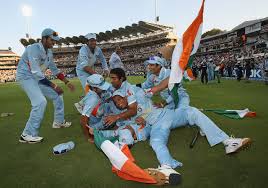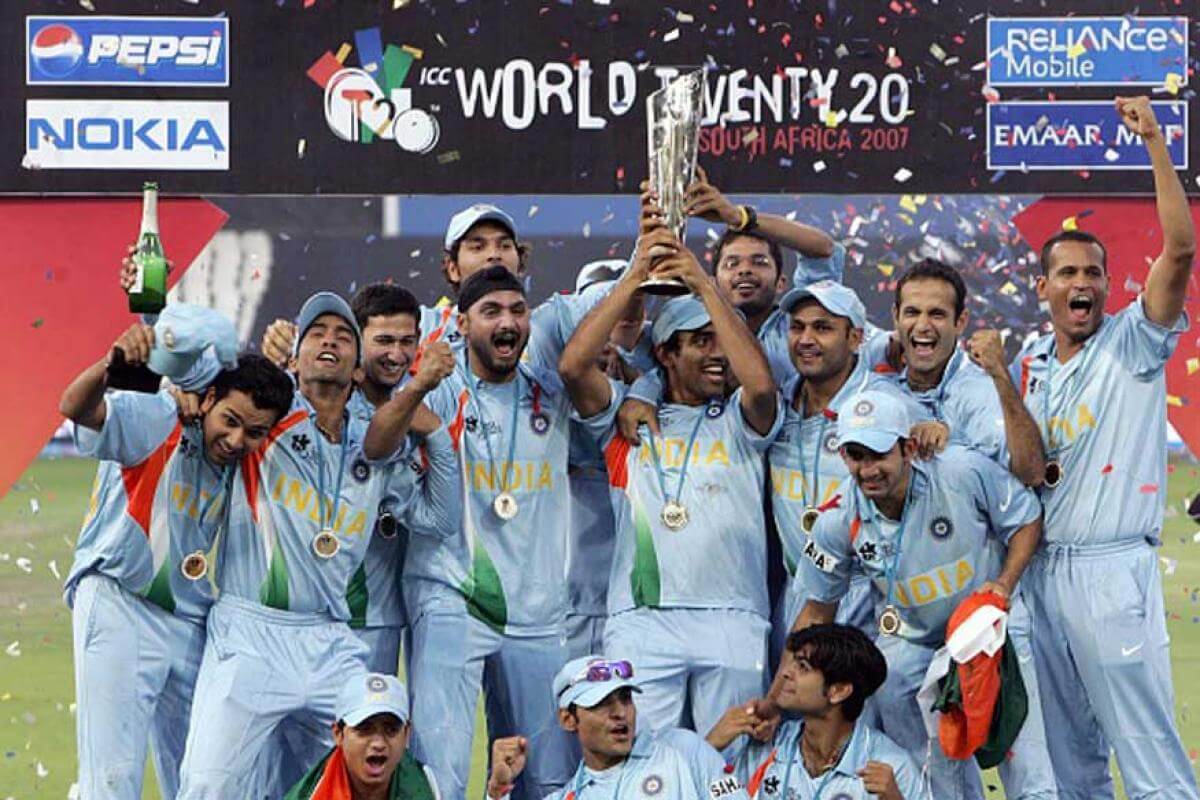Reading Time: 6 minutes
Before India began their home season against South Africa in a T-20 series, Ravi Shastri, in a media interaction commented on how India would reportedly view T-20 and ODI formats separately. This is a shift in the thought process of BCCI and Indian cricket where T-20 cricket until now was looked upon as an extension of the ODI format. Vijayhardik reports, exclusively for Different Truths.
 As India begin their home season taking on South Africa in a T-20 series after a washout of the first T-20 in Dharamshala, a few thoughts spring up in my mind.
As India begin their home season taking on South Africa in a T-20 series after a washout of the first T-20 in Dharamshala, a few thoughts spring up in my mind.
The BCCI viewed the shortest format through the lens of skepticism. With a puritan view of the sport, the Indian cricket board did not consider T-20 to be important.
India has an interesting relationship with the T-20 format. The BCCI viewed the shortest format through the lens of skepticism. With a puritan view of the sport, the Indian cricket board did not consider T-20 to be important. Results in the format did not matter.
The history of T-20 in Indian cricket began in the year 2006. India played a one-off game against South Africa under the leadership of Virender Sehwag. The game is fondly remembered for being Sachin Tendulkar’s only T-20 in Indian colors. While India did manage to win against hosts South Africa by 6 wickets, it did not set the pulse soaring.
After the debacle of the 2007 World Cup, where India made a first round exit; a young and inexperienced team was sent to South Africa to take part in the World Cup. Neither did the fans have any expectations nor did the board think India would win it.
That was the only T-20 match before the inaugural edition of the T-20 World Cup. After the debacle of the 2007 World Cup, where India made a first round exit; a young and inexperienced team was sent to South Africa to take part in the World Cup. Neither did the fans have any expectations nor did the board think India would win it. It was just a slam-bang version without much importance.
But what transpired in the South African summer changed the course of Indian cricket forever. Winning the inaugural edition of the T-20 World Cup not only healed the wounds of the early exit of the World Cup, it also gave us a new set of stars. One of the biggest names in World cricket, Mahendra Singh Dhoni, began his legacy there. It also changed the way BCCI and India looked at T-20 cricket.
One of the biggest names in World cricket, Mahendra Singh Dhoni, began his legacy there. It also changed the way BCCI and India looked at T-20 cricket.
A year after India were crowned champions of the shortest format of the game, the BCCI launched the Indian Premier League. The first of its kind cricket league in the world. Eight franchises and a gamut of players bought by them in an auction splurging huge amounts of money and a dash of glitz added to it made it a perfect eye grabber. The fact it turned out to be a cash cow for the BCCI was an added advantage.
As you are reading this, the IPL has completed 12 seasons. It has endured match fixing scandals, ownership problems and overdose of T20 cricket with lengthy schedules. The league has managed to reinvent itself after every scandal. Today, it is the only T-20 league with a place in the ICC FTP (Future Tours Program), which is a schedule of the international fixtures.
In three consecutive editions of the T-20 World Cup after the IPL, India failed to move past the second round. Many fans attributed it to the IPL being scheduled before the World Cup as it caused fatigue among the players.
After the launch of IPL, much has changed for Indian cricket. But its fortunes have dipped considerably at the World Cup. In three consecutive editions of the T-20 World Cup after the IPL, India failed to move past the second round. Many fans attributed it to the IPL being scheduled before the World Cup as it caused fatigue among the players. Others put it down to a jinx.
dipped considerably at the World Cup. In three consecutive editions of the T-20 World Cup after the IPL, India failed to move past the second round. Many fans attributed it to the IPL being scheduled before the World Cup as it caused fatigue among the players. Others put it down to a jinx.
In the last two T-20 World Cups, in 2014 and 2016, India managed to break the jinx. India came close to being crowned the world champions at Dhaka, in 2014. With Yuvraj Singh and Virat Kohli at the crease and four over left in the innings, India was looking for a final flourish in the last over to take the team to a competitive total. Overs kept rolling by, but the flourish never came. The last four overs of the Indian batting sealed the fate of the match against them.
In 2016, playing on home turf, fans in the country and across the globe, hoped that India would repeat their performance in the 2011 World Cup. In 2011, India won the 50 over World Cup at the Wankhede after a gap of 28 years.
In 2016, playing on home turf, fans in the country and across the globe, hoped that India would repeat their performance in the 2011 World Cup. In 2011, India won the 50 over World Cup at the Wankhede after a gap of 28 years. With home advantage on their side and being acclimatised to the grounds, India were firm favourites to win the World Cup.
They were on course to the title. India playing West Indies in the semi-final piled on the runs batting first. Virat Kohli led the charge scoring an unbeaten 90 in the game. However, a couple of no-balls by Ravichandran Ashwin at crucial junctures in the game put all hopes to rest. Slowly but surely, a game that was supposed to be in India’s kitty slipped away from their grasp.
Now, during the current home season, India’s cricket calendar is choc-a-bloc with Tests and T-20s. This a shift from the patterns of the past.
Now, during the current home season, India’s cricket calendar is choc-a-bloc with Tests and T-20s. This a shift from the patterns of the past. Earlier, a touring side to India played a series of one the longer formats of the game followed by a T-20 series. But in the recent tour of South Africa to India has the Proteas playing the T-20 games first.
What Prompted this Change?
And is the change just limited to schedule? Or will there be a tinkering of the players as well?
But what makes the change more interesting is the recent comments of India coach, Ravi Shastri.
With two T-20 World Cups line back-to-back before the next World Cup, the change in schedule seems natural. But what makes the change more interesting is the recent comments of India coach, Ravi Shastri. In an interview with the Times of India, he commented, “One-day cricket and T-20s have vastly different identities and one cannot look at it through the mere lens of white-ball cricket. T-20 is a wholly different ball game, and that is how we are going to pursue it.”
India is now looking at bringing in specialist T-20 players like Krunal Pandya, Rishabh Pant into the squad.
Perusing the statement given by Ravi Shastri, it looks like Team India is finally delinking the T-20 format from ODI cricket. The squad selection for the T-20 series reflects the change in approach. India is now looking at bringing in specialist T-20 players like Krunal Pandya, Rishabh Pant into the squad. Earlier the squads for ODIs and T-20s would reflect the same set of players and would often lead to stress and fatigue among players.
If you peek a glance at the teams of full ICC members, they already have a system in place where they maintain rosters of players whose skill set is suited only for a Test scenario, ODI game and the T-20 format built around a core group of players. Australia, New Zealand, England follow such an approach to the game.
Such an approach allows them to be more competitive in the game and helps the teams meet the requirements of each of the cricketing formats.
Such an approach allows them to be more competitive in the game and helps the teams meet the requirements of each of the cricketing formats. While certain teams have got a head start on it, India too seems to be joining the bandwagon, albeit a bit late.
Will the new approach pay dividends for the Indian Cricket Team in T-20 games? That is a question whose answers can be found on the field with the 22-yards strip where all the action takes place.
Photos sourced by the author from the Internet













